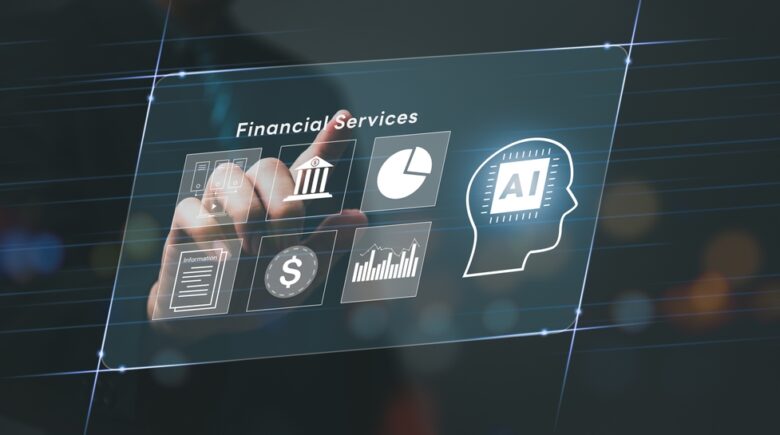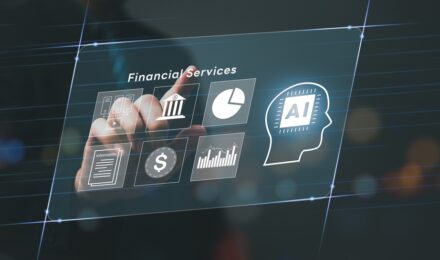Personal loans have long been a cornerstone of consumer finance, providing borrowers with a flexible tool for consolidating debt, funding major expenses, or covering unexpected costs. In 2025, however, the approval process looks dramatically different than it did even a decade ago. Advances in artificial intelligence (AI) and the rise of fintech lenders are transforming how applications are reviewed, how risk is assessed, and who gains access to credit.
This article explores how AI is reshaping personal loan approvals, highlights the benefits and risks of these changes, and considers what the future may hold for borrowers and regulators alike.
The Rise of Fintech Lending
Fintech lenders have gained significant market share in recent years, offering faster approvals and digital-first experiences compared to traditional banks. Many of these companies rely on AI-driven underwriting models that assess creditworthiness using far more data points than conventional credit scores.
Instead of focusing solely on repayment history or income levels, AI algorithms may incorporate transaction histories, employment patterns, educational background, and even social or behavioral indicators. This allows fintechs to make lending decisions within minutes, providing a level of speed and accessibility that traditional institutions have struggled to match.
Benefits of AI-Driven Approvals
The use of AI in lending brings several advantages for consumers and lenders alike. Faster processing is one of the most visible improvements. Applicants who once waited days or weeks for decisions can now receive approvals in real time. AI also allows lenders to offer more personalized rates, tailoring loan terms to an applicant’s unique risk profile.
Another benefit is expanded access. Borrowers with thin or nontraditional credit histories, such as young adults or recent immigrants, may now qualify for loans based on alternative data sources. By evaluating broader financial behavior, AI can help include populations previously underserved by traditional banking systems.
Two benefits stand out most clearly:
- Efficiency and Speed: Automation reduces manual review, leading to quicker approvals and lower administrative costs.
- Expanded Inclusion: Alternative data allows lenders to serve individuals excluded from traditional credit scoring, improving financial inclusion.
Risks and Concerns
While the promise of AI is significant, it also raises important risks. Algorithmic bias is one of the greatest concerns. If models are trained on biased data, they may replicate or even amplify existing inequities, disproportionately disadvantaging certain demographic groups. Transparency is another challenge: many consumers do not understand how their applications are evaluated, and lenders are not always forthcoming with explanations.
There are also cybersecurity concerns. AI-driven platforms rely on massive amounts of personal data, making them attractive targets for hackers. Protecting this data while ensuring compliance with privacy regulations is a growing challenge for fintech firms.
The Role of Regulation
Regulators are beginning to address these issues. The Consumer Financial Protection Bureau (CFPB) and other agencies have issued guidance on the use of AI in credit underwriting, emphasizing fairness, transparency, and consumer protection. Proposed frameworks call for clearer disclosures, routine bias testing of algorithms, and stronger oversight of alternative data usage.
At the state level, regulators are also taking action, with some requiring fintech lenders to demonstrate compliance with anti-discrimination laws and fair lending practices. The evolving regulatory landscape will play a critical role in determining how AI continues to shape the lending market.
Traditional Banks vs. Fintechs
Traditional financial institutions are not standing still. Many banks are adopting AI models themselves, often blending advanced algorithms with established credit practices. This hybrid approach allows them to remain competitive while addressing concerns around risk management and regulatory compliance. Still, fintechs maintain an edge in speed and customer experience, leaving traditional lenders under pressure to innovate further.
Looking Ahead: The Future of Personal Loan Approvals
The next stage of AI-powered lending is likely to involve even more integration with consumers’ digital financial lives. Borrowers may soon grant lenders direct access to real-time transaction data, enabling instant, dynamic credit decisions. Predictive analytics could also play a larger role, with AI evaluating not just past behavior but projected future earning potential.
For borrowers, this future promises faster, more tailored credit access — but also greater need for vigilance. Understanding how AI models operate, advocating for transparency, and monitoring one’s digital footprint will become essential aspects of financial literacy.
Conclusion
AI-powered lending has reshaped the personal loan approval process in 2025, offering speed, personalization, and expanded access to credit. Yet the same technology that enables these advantages also carries risks of bias, opacity, and data security vulnerabilities. The balance between innovation and regulation will determine whether AI ultimately makes lending more equitable and efficient or introduces new challenges for borrowers. For consumers, the key lies in staying informed and using these evolving tools responsibly.
References
- Consumer Financial Protection Bureau – Guidance on AI and Credit Decisions
- Federal Reserve – Reports on Fintech Lending
- Brookings Institution – Artificial Intelligence in Financial Services
- McKinsey & Company – The Future of AI in Banking
Personal loans have long been a cornerstone of consumer finance, providing borrowers with a flexible tool for consolidating debt, funding major expenses, or covering unexpected costs. In 2025, however, the approval process looks dramatically different than it did even a decade ago. Advances in artificial intelligence (AI) and the rise of fintech lenders are transforming how applications are reviewed, how risk is assessed, and who gains access to credit.
This article explores how AI is reshaping personal loan approvals, highlights the benefits and risks of these changes, and considers what the future may hold for borrowers and regulators alike.
The Rise of Fintech Lending
Fintech lenders have gained significant market share in recent years, offering faster approvals and digital-first experiences compared to traditional banks. Many of these companies rely on AI-driven underwriting models that assess creditworthiness using far more data points than conventional credit scores.
Instead of focusing solely on repayment history or income levels, AI algorithms may incorporate transaction histories, employment patterns, educational background, and even social or behavioral indicators. This allows fintechs to make lending decisions within minutes, providing a level of speed and accessibility that traditional institutions have struggled to match.
Benefits of AI-Driven Approvals
The use of AI in lending brings several advantages for consumers and lenders alike. Faster processing is one of the most visible improvements. Applicants who once waited days or weeks for decisions can now receive approvals in real time. AI also allows lenders to offer more personalized rates, tailoring loan terms to an applicant’s unique risk profile.
Another benefit is expanded access. Borrowers with thin or nontraditional credit histories, such as young adults or recent immigrants, may now qualify for loans based on alternative data sources. By evaluating broader financial behavior, AI can help include populations previously underserved by traditional banking systems.
Two benefits stand out most clearly:
- Efficiency and Speed: Automation reduces manual review, leading to quicker approvals and lower administrative costs.
- Expanded Inclusion: Alternative data allows lenders to serve individuals excluded from traditional credit scoring, improving financial inclusion.
Risks and Concerns
While the promise of AI is significant, it also raises important risks. Algorithmic bias is one of the greatest concerns. If models are trained on biased data, they may replicate or even amplify existing inequities, disproportionately disadvantaging certain demographic groups. Transparency is another challenge: many consumers do not understand how their applications are evaluated, and lenders are not always forthcoming with explanations.
There are also cybersecurity concerns. AI-driven platforms rely on massive amounts of personal data, making them attractive targets for hackers. Protecting this data while ensuring compliance with privacy regulations is a growing challenge for fintech firms.
The Role of Regulation
Regulators are beginning to address these issues. The Consumer Financial Protection Bureau (CFPB) and other agencies have issued guidance on the use of AI in credit underwriting, emphasizing fairness, transparency, and consumer protection. Proposed frameworks call for clearer disclosures, routine bias testing of algorithms, and stronger oversight of alternative data usage.
At the state level, regulators are also taking action, with some requiring fintech lenders to demonstrate compliance with anti-discrimination laws and fair lending practices. The evolving regulatory landscape will play a critical role in determining how AI continues to shape the lending market.
Traditional Banks vs. Fintechs
Traditional financial institutions are not standing still. Many banks are adopting AI models themselves, often blending advanced algorithms with established credit practices. This hybrid approach allows them to remain competitive while addressing concerns around risk management and regulatory compliance. Still, fintechs maintain an edge in speed and customer experience, leaving traditional lenders under pressure to innovate further.
Looking Ahead: The Future of Personal Loan Approvals
The next stage of AI-powered lending is likely to involve even more integration with consumers’ digital financial lives. Borrowers may soon grant lenders direct access to real-time transaction data, enabling instant, dynamic credit decisions. Predictive analytics could also play a larger role, with AI evaluating not just past behavior but projected future earning potential.
For borrowers, this future promises faster, more tailored credit access — but also greater need for vigilance. Understanding how AI models operate, advocating for transparency, and monitoring one’s digital footprint will become essential aspects of financial literacy.
Conclusion
AI-powered lending has reshaped the personal loan approval process in 2025, offering speed, personalization, and expanded access to credit. Yet the same technology that enables these advantages also carries risks of bias, opacity, and data security vulnerabilities. The balance between innovation and regulation will determine whether AI ultimately makes lending more equitable and efficient or introduces new challenges for borrowers. For consumers, the key lies in staying informed and using these evolving tools responsibly.







